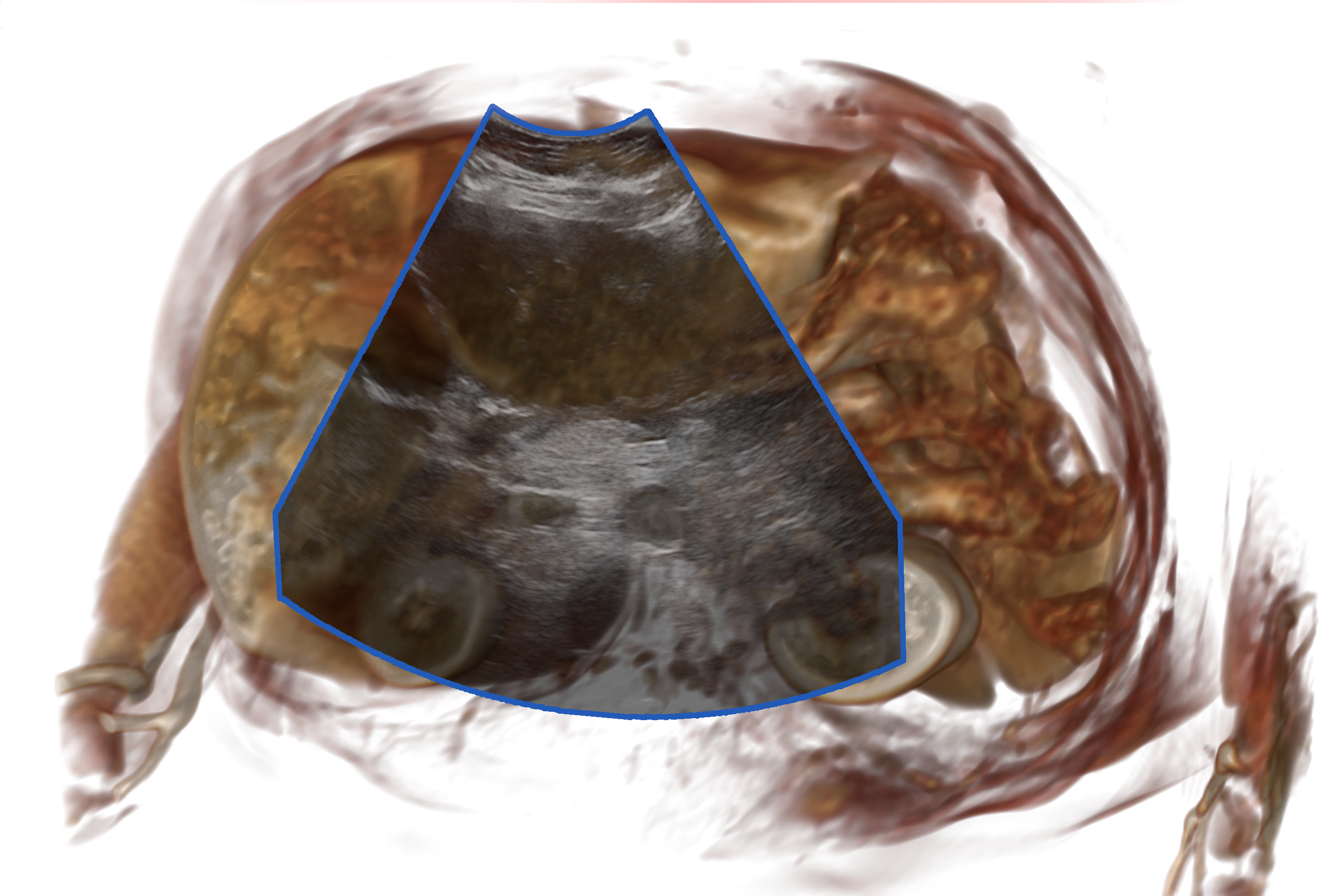
As our company name suggests, Im(age)Fusion and Registration are central to our expertise and deeply embedded within our software architecture. In the context of medical image analysis, "registration" refers to the process of aligning image data from various sources, time points, and modalities into a common spatial coordinate system. This alignment ensures accurate visualization and measurement of anatomical structures together.
To that end, we have cutting-edge technology for image-based registration, where the entire content of two or more images or volumes is used to assess the alignment of anatomical structures. The quality of alignment is quantified by a similarity measure or cost function, of which we have implemented many variants. In particular, signature patch-based techniques that overcome changes in appearance between imaging modalities with substantially different imaging physics, such as CT-Ultrasound and MRI-Ultrasound are available (cf. Wein2008, Wein2013). Transformations between the images being matched are adjusted to maximize the similarity measure, and we provide a comprehensive toolbox of nonlinear optimization techniques, including global and local methods. Supported transformations are rigid, affine, parametric deformable using free-form-deformations (FFD) or thin-plate-splines (TPS), and voxel-wise dense deformable. The latter is used with a Demons approach, where local similarity forces are computed and smoothed which iteratively update the deformation field.

In addition, a powerful set of visualization and annotation tools supports the analysis of fused data sets. Dedicated landmark-based evaluation may be used to thoroughly investigate registration accuracy. Measurements and segmented surfaces are transformed and linked to the registration results. Different blending, super-imposition and side-by-side display options allow for intuitive visual comparison. Lastly, registered data sets may be re-sampled in the coordinate space of the reference data and exported as DICOM and other formats.
